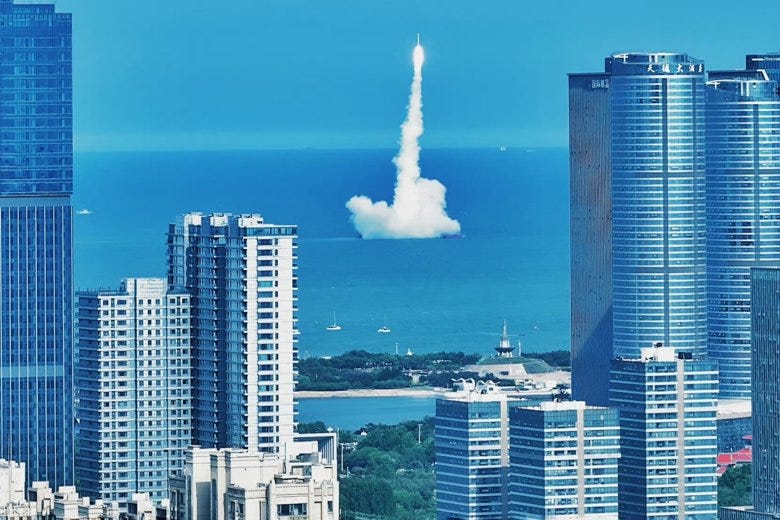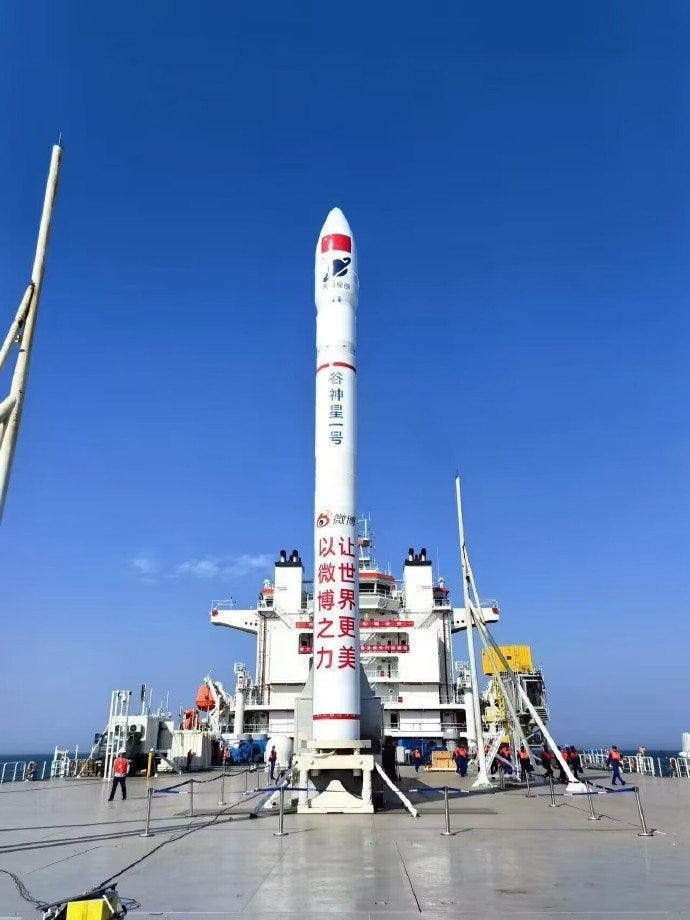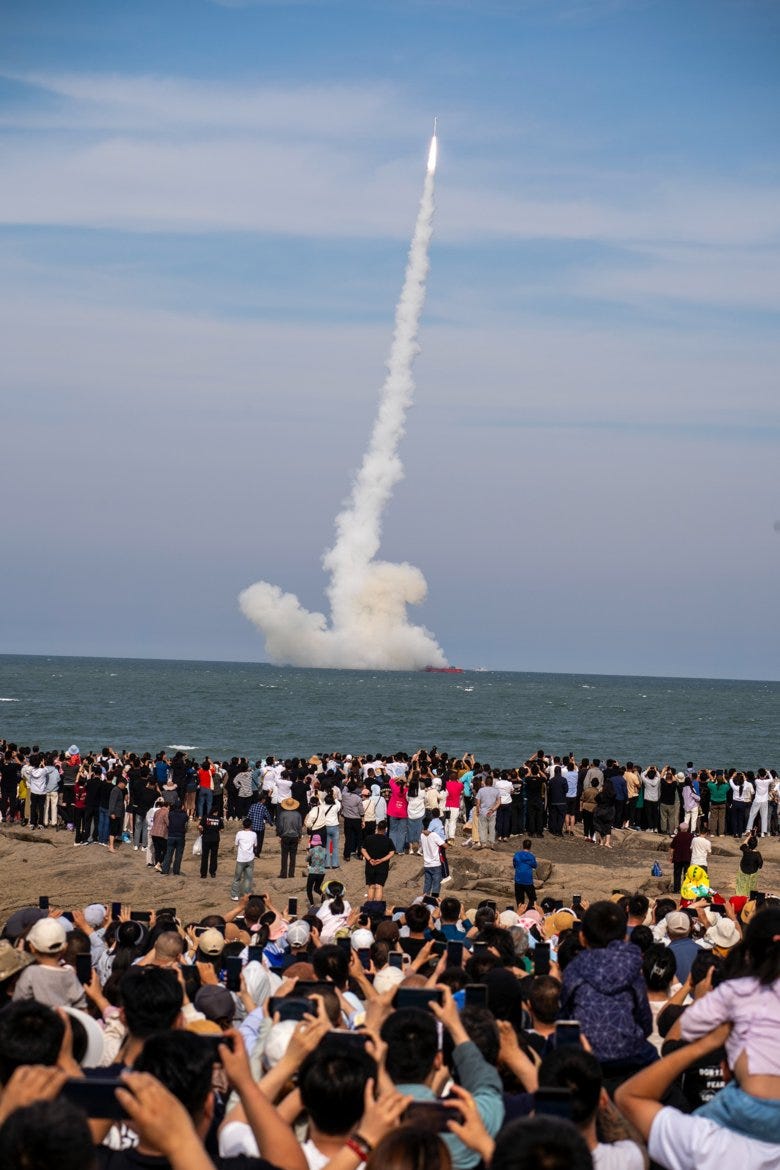Ceres-1S heads to orbit from sunshine city! [Ceres-1S Y2]
This post was originally posted on May 29th 2024 on Ko-fi.
Galactic Energy has launched yet another Ceres-1 rocket, marking the twelfth orbital launch attempt for the company and the eleventh successful flight of a Ceres-1 launch vehicle. This was the second flight of the Ceres-1S variant of the rocket, which has minor modifications to enable launch from a sea-based platform. Galactic Energy has this launch denotated as Y2 with a third 1S rocket in production awaiting its payload. (Chinese companies, state-owned and private, use Y followed by a number to serialize launch mission numbering like NASA did with STS).
The Y2 launch occurred from the Dong Fang Hang Tian Gang sea launch vessel approximately three miles off of the coast of the city of Rizhao, which literally translates to sunshine city if my Mandarin hasn't failed me, at 16:12 pm Beijing Time, which was 08:12 am Universal Coordinated Time. Dong Fang Hang Tian Gang is the same ship that OrienSpace's Gravity-1 rocket debuted from, in support of Ceres-1S minor changes were made to where the rocket is placed due to its substantially lower thrust.
Dong Fang Hang Tian Gong's position in the Yellow Sea close to Rizhao raised some questions about potential safety concerns to the public, which many are quick to throw out due to three of China's other launch site locations. Ceres-1 rockets however are one of, if not the, most launched private launch vehicles having launched twelve times with one failure. Galactic Energy's launch safety teams are also very quick to terminate abnormal flights, such as Ceres-1 Y11 in September of 2023.
Onboard the Y2 vehicle were four Tianqi satellites, No. 25-28, headed to an 835 by 852 kilometer 45-degree orbit. The Tianqi satellites are built and operated by Guodian Gaoke, based out of Beijing and privately owned, for its 'internet of things' and communications network of spacecraft in low Earth orbit.
Each Tianqi satellite is believed to weigh under 50 kilograms while being powered by at least two small solar panels that deploy after launch. The spacecraft are not believed to possess any way to change their orbit but can control their orientation. Tianqi satellites also have lightweight cameras installed for educational use.
The main uses of the Tianqi Network are: marine monitoring, environmental protection, meteorological surveying, forestry surveying, geological surveys, emergency and disaster response, and city planning. Since Tianqi 19, satellites in the network are believed to have a newer design with improved systems and capabilities.
Galactic Energy is believed to have at least six more Ceres-1 launches planned for this year, all currently slated from the Jiuquan Satellite Launch Center. If any notices of Ceres-1 launches from the Taiyuan Satellite Launch Center appear they will likely be sea launches as Taiyuan handles administrative duties for launches in the Yellow Sea. Alongside these Pallas-1, the in-development partially re-usable launch vehicle, also has the possibility of debuting towards the end of the year.







